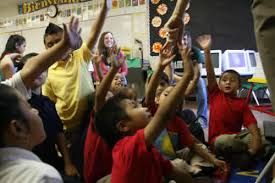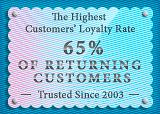
Independent Academies on the Rise, Along with Student Participation
The growing number of independent academies throughout the country has resulted in an increase of schools which seek to gain a competitive advantage by lengthening their school days and trimming the students’ 6-week summer break. Studies have shown that there has been a 40% increase in academies—schools which are funded by tax-payers and which operate independently from the city’s governing educational bodies—since 2012 and that the number of schools which have been extending their school days has risen from 16% in 2012 to 18% this year.
 Some schools have even taken to altering their academic calendars almost completely: some schools have trimmed their students’ summer holidays—saying that this is the best way to avoid the dip in student performance upon returning from summer vacation. Representatives from these academies say that altering the school system to be able to dedicate more time to academics in turn allows them to plan more fun school activities for the students. They say that since their class days have started earlier and ended later, there have been a lot more school functions which are dedicated to the students’ leisure and developing their skills which aren’t necessarily catered to by their academic subjects (e.g. sports, board games, applied music).
Some schools have even taken to altering their academic calendars almost completely: some schools have trimmed their students’ summer holidays—saying that this is the best way to avoid the dip in student performance upon returning from summer vacation. Representatives from these academies say that altering the school system to be able to dedicate more time to academics in turn allows them to plan more fun school activities for the students. They say that since their class days have started earlier and ended later, there have been a lot more school functions which are dedicated to the students’ leisure and developing their skills which aren’t necessarily catered to by their academic subjects (e.g. sports, board games, applied music).
Andrew Haldenby, director of the innovative educational organization called Reform, co-published a study which analyzed the different ways in which independent academies were using their freedom. According to his study, the independence is still limited so that these academies have mainly been doing things like re-shuffling their academic calendar or changing around different petty rules and regulations. The study concluded that more than half of state schools with academy status used their independence to switch time tables, change school colors and alter staff pay. Mr. Haldenby insists that educators can “do better than this”.
He says that the educators should probably be turning their attention to the kinds of things which they include in their curriculum: it isn’t just a matter of shuffling things around, it’s a matter of changing the things which are on the plate. He further insists that the problem is that the independence still has pretty stringent limits with regard to censorship and the kinds of things that they’re allowed to teach. Moreover, he insists that all public schools should seek to gain academy status. He says that this is the only way in which real independence can be given to schools so that they can determine for themselves and for their students the best way to teach primary and secondary school.
All of these things aside, statistics have shown that a decrease in failing secondary students by 250,000 has taken place since 2010 when the number of schools with academy status began to rise steadily. Studies suggest that academy status imparts the ability for teachers and other school education officials to contribute to the schools’ curriculum and make it more dynamic, creative and suited to the children’s needs.
In turn, the children are more open to suggesting certain changes or improvements for the school because they feel that it can be done. Statistics show that the rise of independent academies has significantly raised student participation, despite (perhaps because of) the lengthened school day. It has also been shown to improve teachers’ motivations—teachers from academies have been shown to be more satisfied both with their performance as educators and with the compensation which their given (usually evaluated by the administration based on the teacher’s load and performance—something which non-academy schools do not have the liberty of doing, as they must comply with governmenrates). Educators everywhere have agreed that the freedom given to academies is something which definitely needs to be studied as a means of bettering the educational system—for example, having the freedom to lengthen the school day has helped spike academy students’ academic performance by making the school day less taxing (because students now have more time to do their schoolwork) and more fun for everyone (the teachers also have more time to plan their lessons and check papers).
 + 1-888-827-0150
+ 1-888-827-0150 + 44-20-3006-2750
+ 44-20-3006-2750









